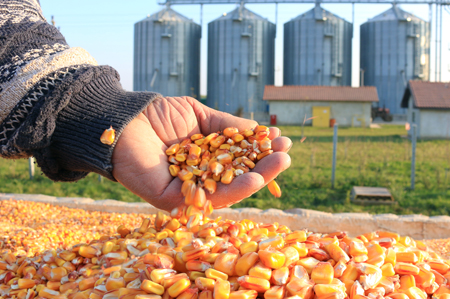Grain Prices to Remain Flat as U.S. Inventory Excess Is Consumed
Category: Grains
 (AgFax) – Bumper corn yields and excess supply will continue to pressure prices lower during the first half of 2018, according to a Texas A&M AgriLife Extension Service economist.
(AgFax) – Bumper corn yields and excess supply will continue to pressure prices lower during the first half of 2018, according to a Texas A&M AgriLife Extension Service economist.
Dr. Jason Johnson, AgriLife Extension economist in Stephenville, told attendees at the Blackland Income Growth Conference in Waco recently the three-month weather outlook for grain crops calls for above normal temperatures for January and February and a continuation of the current La Nina pattern typically associated with dry winters in Texas.
“Some combination of forces that deplete the supply overhang will be needed to drive prices higher,” Johnson said. “The good news is we do see a bit of a world production drop off.”
The U.S., China, Brazil and the European Union account for more than 70 percent of the corn produced worldwide.
“Exports play a big role,” he said. “Argentina and Brazil now export more corn than the U.S.”
The North American Free Trade Agreement is one of the overlying factors, he said.
“That has added to inventories and put on some of the price pressure,” Johnson said. “We have the highest number of grain-consuming animal units in our history. And we are exporting a lot of corn. For the current marketing year, Mexico has accounted for 36 percent of U.S. corn exports, while Japan accounts for 16 percent.”
Johnson said for corn prices to start making a rally, “we have to see some expectations that reduce the projected ending stocks to use carryover to support an upward trend.”
Currently, there are 70 days of corn use on hand and 104 days of soybeans. Johnson said the marketing year average price during the biofuel era ranged from about $3.20 to $6.89 per bushel for corn. Current prices are close to the bottom of that range during this era.
“Our ending stocks-to-use ratio is 17.2 percent with projections for 2018/19 pegged at 16.8 percent, so for our prices to start going up again we need to see expectations for that carryover to come down,” Johnson said. “Typically, we get some seasonal price rally in June and July. That’s when you need to seriously consider marketing alternatives to price at least a portion of your expected crop production for the year.”
Johnson advised corn growers to spread the marketing of their crop over several periods throughout the year to take advantage of favorable swings in the market. He referenced Dr. Mark Welch, AgriLife Extension grain marketing economist in College Station, who advocates a strategy in his marketing newsletter of selling 20 percent of a hypothetical crop during five separate periods during the year. This is the concept of dollar cost averaging applied to crop marketing.
“That way you are not selling all at one time. Avoid selling everything at harvest when prices are typically among the lowest for the entire year and take advantage of some opportunities to capture some gain in the market throughout the year,” Johnson said.




